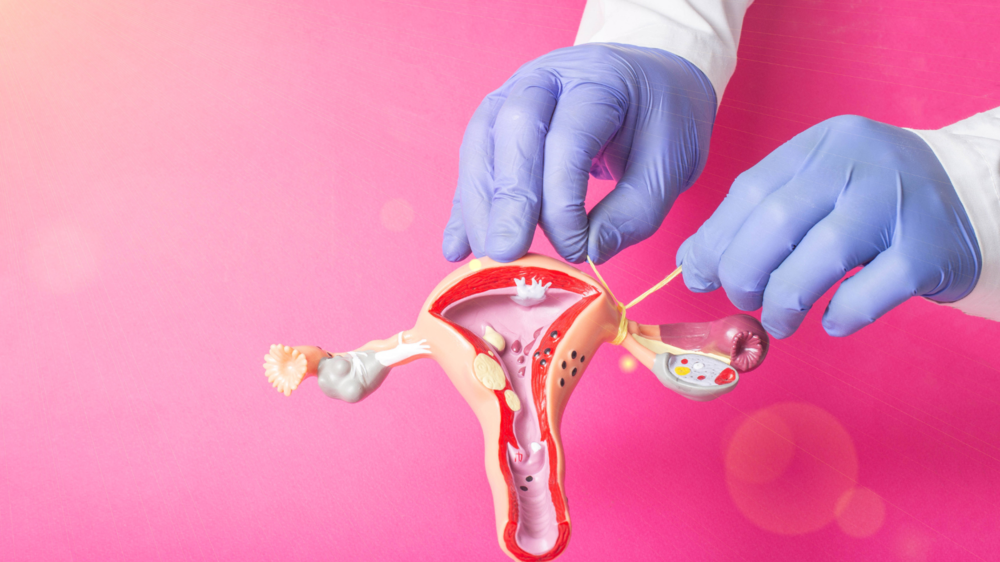In this article:
This may be due to changes in the body over time or the specific technique used during the procedure. If pregnancy happens after tubal ligation, it may carry health risks, and recognising signs early could help you manage the situation more safely.
Some individuals also reconsider having children later in life and look at options to achieve pregnancy again.
What Is Tubal Ligation?
Tubal ligation is a surgical procedure designed to reduce the likelihood of pregnancy by blocking the fallopian tubes. It is commonly referred to as female sterilisation and is considered a long-term or permanent form of birth control.Types of tubal ligation procedures
There are several ways this procedure may be done:- Bipolar coagulation: Uses an electric current to seal sections of the tubes.
- Clips or rings: Small devices are applied to close the tubes without removing them.
- Salpingectomy: Involves removing the fallopian tubes entirely.
- Pomeroy method: A section of the tube is tied and removed.
How the procedure is performed
Tubal ligation is usually done through laparoscopy, where small cuts are made in the abdomen to access the fallopian tubes. It may also be performed during or just after childbirth, or as part of a caesarean section.Recovery may vary depending on the method used and your overall health. In most cases, rest is advised for a few days after the procedure.
Factors that may cause failure
Though the procedure is highly effective, a few factors might increase the chances of pregnancy later:- Tubes healing or reconnecting over time
- Incomplete closure during the procedure
- Use of clips or rings rather than full removal
- Being younger at the time of the surgery
- Several years have passed since the operation
Possibility of Pregnancy After Tubal Ligation
While the procedure has a high success rate, the possibility of becoming pregnant still exists. Understanding when and why this might happen could help in identifying any unexpected changes.Chances of natural conception after tubal ligation
Although rare, a natural pregnancy may still happen. Some individuals may experience tubal regrowth or incomplete blockage that allows fertilisation. This is more likely to occur when mechanical devices like clips are used rather than when the tubes are removed completely.When pregnancy is more likely to occur
Pregnancy may be more likely under certain conditions:- Several years after the surgery, when changes or healing may occur
- When mechanical methods were used during the procedure
- After a tubal ligation is performed, soon after childbirth
Recognising the Signs of Pregnancy
Noticing signs of pregnancy after tubal ligation can be surprising. These may include typical early pregnancy symptoms or signs that suggest a complication like ectopic pregnancy.Symptoms that may be overlooked
Common symptoms of early pregnancy may include:- A missed period
- Feeling unusually tired
- Breast tenderness
- Mild cramps or lower abdominal discomfort
- Nausea or vomiting
Importance of medical confirmation
If pregnancy is suspected, a home test may offer a quick first check. However, it might be important to confirm the result through a blood test or ultrasound. This helps determine whether the pregnancy is in the uterus or elsewhere, such as the fallopian tube, which may be more likely after tubal ligation.Understanding Ectopic Pregnancy Risks
Pregnancy after tubal ligation carries a higher risk of being ectopic, where the fertilised egg implants outside the uterus. This condition requires urgent attention and care.What does an ectopic pregnancy mean
An ectopic pregnancy usually occurs in the fallopian tube and cannot develop into a healthy pregnancy. It may cause serious health risks if not treated promptly. In some cases, the tube may rupture, leading to internal bleeding.Symptoms of ectopic pregnancy
Signs of ectopic pregnancy may include:- Sharp or stabbing pain in the abdomen or pelvis
- Vaginal spotting or bleeding
- Shoulder pain
- Dizziness or fainting
Why are ectopic pregnancies more common after tubal ligation
The procedure may leave behind scar tissue or allow small gaps in the tubes where an embryo may implant. Since the passage to the uterus is no longer clear, the fertilised egg may settle in an area where it cannot grow properly, increasing the likelihood of an ectopic pregnancy.What To Do If You Suspect Pregnancy
If pregnancy is suspected following a tubal ligation, it may help to take a pregnancy test as a first step. If the result is positive or unclear, follow-up with a healthcare professional may help to confirm and evaluate the situation. This is particularly important to rule out ectopic pregnancy, which might require immediate care.Tubal Ligation Reversal
Some individuals later decide to explore pregnancy again and may consider reversing the procedure. This might be possible depending on the method used during ligation and the condition of the fallopian tubes.What the reversal process involves
Tubal ligation reversal is a surgery that reconnects the fallopian tubes. It is performed under anaesthesia and may involve using microsurgical techniques. The goal is to allow the egg and sperm to meet again. Recovery time may vary, and the success of the reversal may depend on the original sterilisation method and how much of the tube remains intact.Eligibility for reversal
Reversal may be an option if:- The original procedure left enough healthy tubes remaining
- You have no other fertility concerns
- The initial method did not involve the complete removal of the tubes
Exploring IVF and Other Fertility Options
In cases where reversal is not suitable or successful, IVF may offer an alternative. IVF allows fertilisation to happen outside the body, after which an embryo is placed directly into the uterus, bypassing the tubes entirely. Options like egg donation or surrogacy may also be explored, depending on personal circumstances and preferences.Emotional and Psychological Impacts
Discovering a pregnancy after tubal ligation, or deciding to try for a child later, can bring up a range of feelings. You may find yourself dealing with unexpected emotions, from confusion to hope or concern.Dealing with an unexpected pregnancy or fertility desires
It might help to give yourself time to reflect and process any feelings that come up. Support from others may be valuable, especially when making important decisions about the future.Support and counselling options
Some people find comfort in speaking with a counsellor, therapist, or support group. Fertility counselling and couples' therapy may help in discussing options or coping with the emotional impact of changing fertility choices.Tubal ligation is often chosen as a long-term method of contraception, but pregnancy may still occur in rare situations. Understanding the signs, especially the possibility of an ectopic pregnancy, could help in seeking timely medical attention.
If you are considering becoming pregnant after tubal ligation, options such as reversal surgery or IVF might be worth exploring. Each situation is different, so guidance from a medical professional may support informed decisions.
FAQs on Pregnancy After Tubal Ligation – Is It Possible?
- Can you have a healthy pregnancy after tubal ligation?
Yes, though rare, healthy pregnancies can happen after tubal ligation, especially with reversal or IVF. Close medical monitoring is essential due to the increased risk of complications. - What should you do if you suspect an ectopic pregnancy after tubal ligation?
Seek immediate medical care if you notice symptoms like sharp pain or bleeding. Prompt diagnosis can prevent serious health risks and guide timely treatment.
- Can you have a healthy pregnancy after tubal ligation?
Yes, though rare, healthy pregnancies can happen after tubal ligation, especially with reversal or IVF. Close medical monitoring is essential due to the increased risk of complications. - What should you do if you suspect an ectopic pregnancy after tubal ligation?
Seek immediate medical care if you notice symptoms like sharp pain or bleeding. Prompt diagnosis can prevent serious health risks and guide timely treatment.






